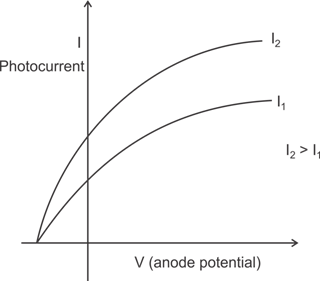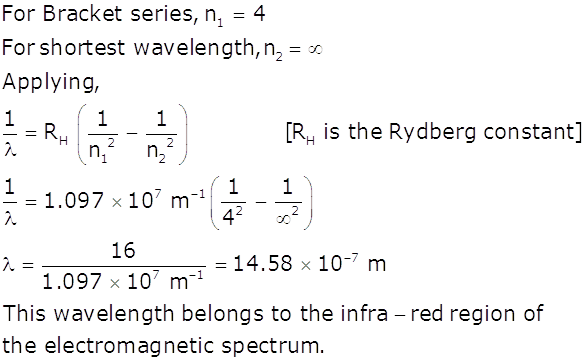Physics: 2019: CBSE: [Delhi]: Set - III
To Access the full content, Please Purchase
-
Q1
Distinguish between unpolarized and linearly polarized light.
Marks:1View AnswerAnswer:
In unpolarized light, the vibrations of light take place in all direction whereas in linearly polarized light, the vibrations of light take place in a direction perpendicular to the direction of wave motion.
-
Q2
Define the term "threshold frequency", in the context of photoelectric emission.
Marks:1View AnswerAnswer:
For any given photosensitive material, there is a certain minimum cut off frequency at which photoelectric emission is possible. This minimum cut off frequency is called threshold frequency. Higher the work function of the material, greater is the threshold frequency.
-
Q3
Define the term "Intensity" in the photon picture of electromagnetic radiation.
Marks:1View AnswerAnswer:
Intensity is defined as the total amount of energy falling on a given surface per unit time per unit area.

-
Q4
How is the drift velocity in a conductor affected with the rise in temperature?
Marks:1View AnswerAnswer:
When the temperature is increased, the electrons get excited, that is, a rise in temperature causes the atoms to vibrate more vigorously. This increases the number of collisions the electrons have, thereby decreasing the drift velocity.
-
Q5
In sky wave mode of propagation, why is the frequency range of transmitting signals restricted to less than 30 MHz?
Marks:1View AnswerAnswer:
The maximum frequency below which the signals can be transmitted from one point to another through the reflection from the ionosphere is 30 MHz. Above 30 MHz, the signals will be transmitted through the ionosphere and will not be reflected back.
-
Q6
On what factors does the range of coverage in ground wave propagation depend?
Marks:1View AnswerAnswer:
The range of coverage in ground wave propagation depends on transmitted power and frequency.
-
Q7
Draw the pattern of electric field lines when a point charge, +q is kept near an uncharged conducting plate.
Marks:1View AnswerAnswer:
The pattern of electric field lines when a point charge +q is kept near an uncharged conducting plate:

-
Q8
(a) Define the terms,
(i) threshold frequency and
(ii) stopping potential in photoelectric effect.
(b) Plot a graph of photocurrent versus anode potential for a radiation of frequency, and intensities I1 and I2 (I1 < I2).
and intensities I1 and I2 (I1 < I2).
Marks:2View AnswerAnswer:
(a) (i) The threshold frequency is the lowest frequency of at which the emission of electrons from a specific metal surface takes place.
(ii) The stopping potential is defined as the minimum negative potential that is required to stop an electron from reaching the anode.
(b)
Graph of photocurrent versus anode potential for a radiation of frequency, and intensities I1 and I2 (I1 < I2) is shown as:
and intensities I1 and I2 (I1 < I2) is shown as:

-
Q9
Why a signal transmitted from a TV tower cannot be received beyond a certain distance? Write the expression for the optimum separation between, the receiving and the transmitting antenna.
Marks:2View AnswerAnswer:
Signal transmitted from a TV tower cannot be received beyond a certain distance because of the curvature of the earth.


-
Q10
State Bohr's quantization condition of angular momentum. Calculate the shortest wavelength of the Bracket series and state to which part of the electromagnetic spectrum does it belong?
Marks:2View AnswerAnswer:





